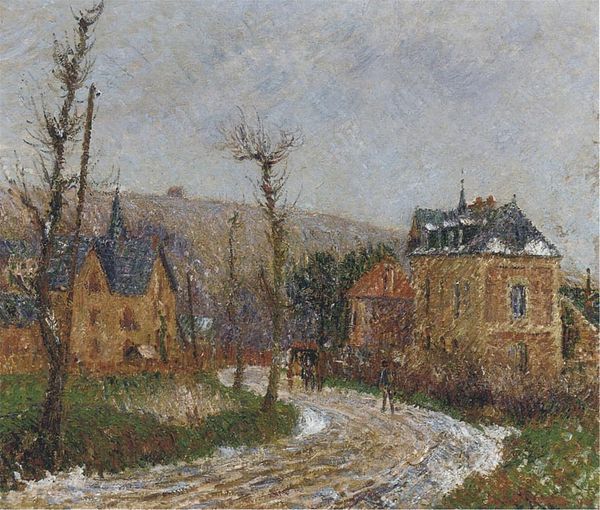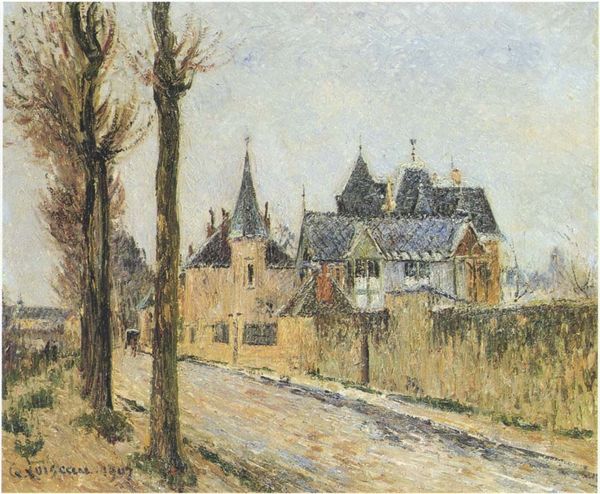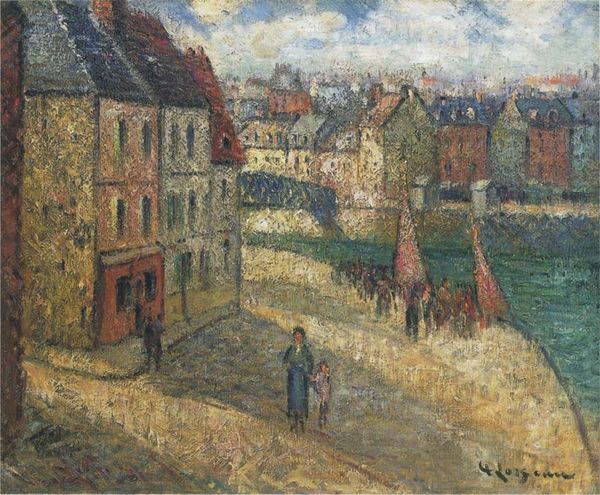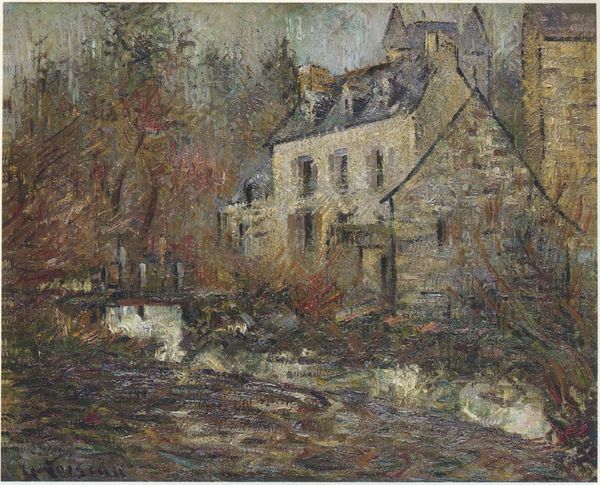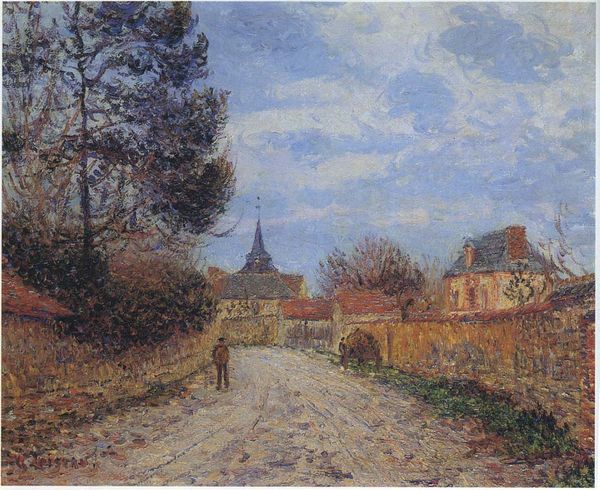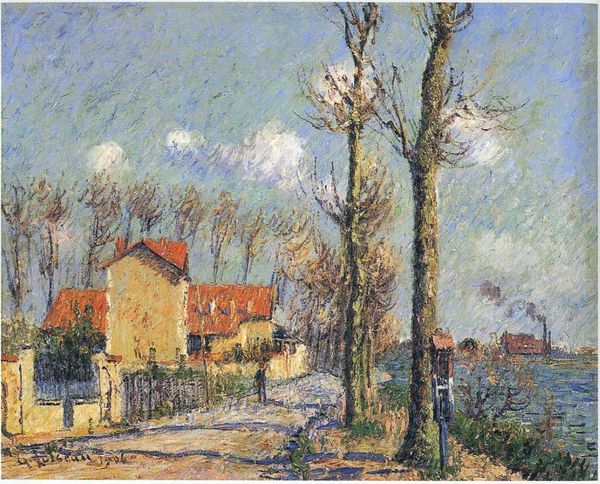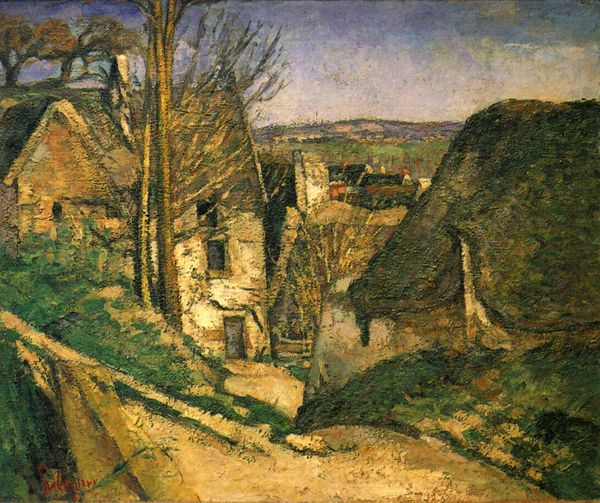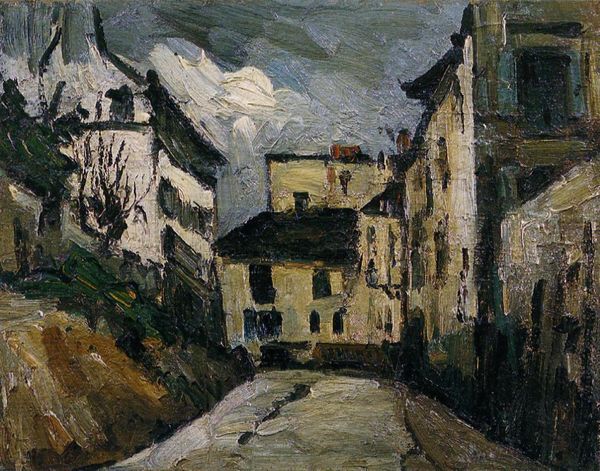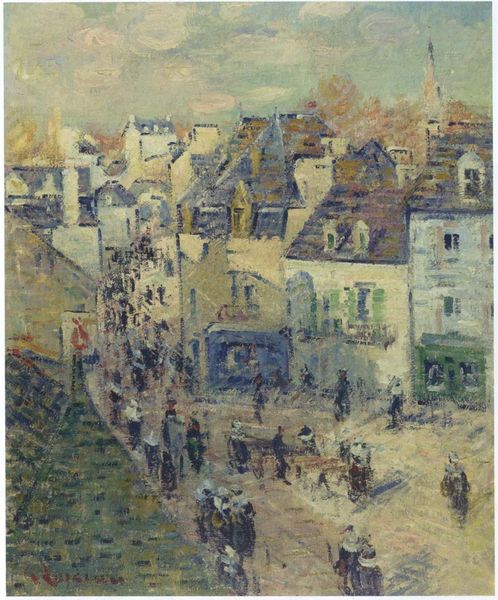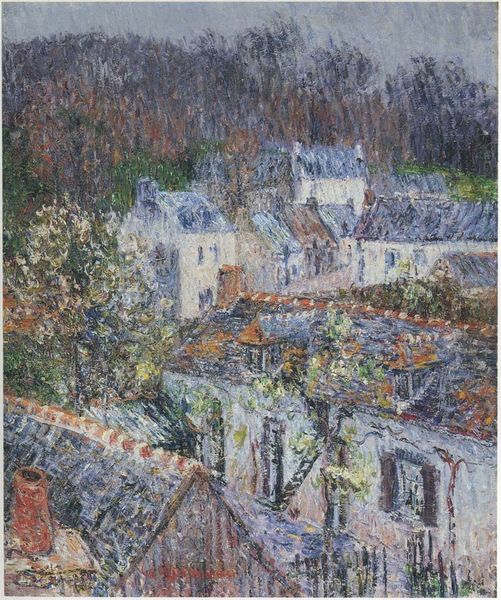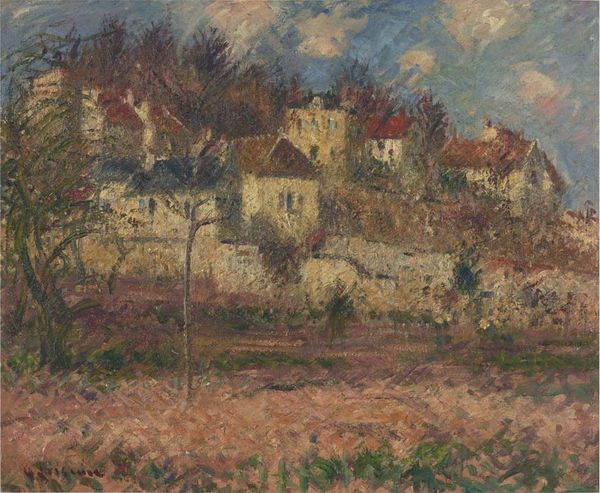
Copyright: Public domain
Curator: This oil on canvas piece by Gustave Loiseau, titled "House of the Sisters in Pontoise," dates back to 1924. The painting embodies the spirit of Impressionism through its cityscape scene. Editor: My first thought? Gloomy. But also intriguing. The palette feels so restrained, dominated by earth tones that hint at a history of silence. It evokes such isolation to me. Curator: Interesting, and I can see why you would feel that way. Note the artist's careful use of impasto. The thick application of paint creates a tactile surface, reflecting light and shadow in a way that structures and animates the whole scene. Look closely at how the texture informs the perspective—the artist truly leads your eye throughout the frame. Editor: That texture contributes to my feeling of melancholy! The heavy brushstrokes seem to weigh down the buildings. I see a metaphor here—maybe Loiseau is trying to depict how historical institutions can become burdened and, therefore, stagnant. Did these "sisters" perhaps represent outdated societal expectations of women during the interwar period? Curator: That’s a rather fascinating theory. From a formal standpoint, the composition employs a high horizon line, emphasizing the imposing architecture and suggesting a certain grandeur. It also creates a rather ambiguous sense of space. The relationship of the buildings to one another—and even the viewer—remains somewhat spatially elusive. Editor: I like that elusiveness! It enhances the mysterious mood. This muted palette—the browns and greys punctuated with flashes of autumnal color—might also reflect the psychological landscape of postwar Europe. An air of desolation is common within a continent still processing immense losses and the slow return of cultural production and social renewal. Curator: Your read of the sociopolitical undertones really resonate. On closer inspection, observe how the subtle gradations of color create atmospheric perspective. He pushes what can be expressed within an ostensibly limited range of color! The whole image is very carefully orchestrated. Editor: Yes, and understanding how the painting works as a study of color and form can amplify an understanding of its themes as well! Maybe it's this precise arrangement that helps underscore and communicate complex notions about women in postwar Europe. Curator: The power of an object created through and speaking directly with visual and haptic nuance, I find to be more compelling. Editor: Well, I tend to think any good work of art also needs to communicate meaning to people.
Comments
No comments
Be the first to comment and join the conversation on the ultimate creative platform.
